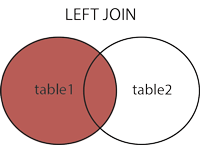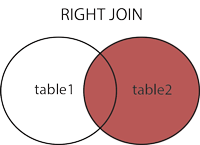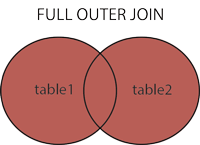JOINS
An SQL JOIN clause is used to combine rows from two or more tables, based on a common field between them.
Rules
-
At least on common column must be present beween two tables
-
PRIMARY_KEY of one table as FORIEN_KEY of another table is recommended.
PRIMARY KEY Constraint
-
The PRIMARY KEY constraint uniquely identifies each record in a database table.
-
Primary keys must contain UNIQUE values.
-
A primary key column cannot contain NULL values.
-
Table can have only ONE primary key.
FOREIGN KEY Constraint
- A FOREIGN KEY in one table points to a PRIMARY KEY in another table.
CASCADE will propagate the change when the parent changes. (If you delete a row, rows in constrained tables that reference that row will also be deleted, etc.)
SET NULL sets the column value to NULL when a parent row goes away.
RESTRICT causes the attempted DELETE of a parent row to fail.
CREATE TABLE `customer` (
`cid` INT NOT NULL,
`name` VARCHAR(50) NULL,
`addr` VARCHAR(50) NULL,
PRIMARY KEY (`cid`)
) ;
CREATE TABLE `order` (
`ord_id` INT NOT NULL,
`ord_item` VARCHAR(50) NULL,
`ord_date` VARCHAR(50) NULL,
`cid` INT NULL,
PRIMARY KEY (`ord_id`),
CONSTRAINT `FK__customer` FOREIGN KEY (`cid`) REFERENCES `customer` (`cid`) ON UPDATE CASCADE ON DELETE CASCADE
)
COLLATE='utf8_general_ci'
ENGINE=InnoDB;
SELECT `DEFAULT_COLLATION_NAME` FROM `information_schema`.`SCHEMATA` WHERE `SCHEMA_NAME`='mydb';

We have 4 types of Joins
1.INNER JOIN:
Returns all rows when there is at least one match in BOTH tables.

SELECT * FROM customer c INNER JOIN `order` o ON c.cid=o.cid

2.LEFT JOIN:
Return all rows from the left table, and the matched rows from the right table. It will fill rows with NULL for unmatched rows on right

SELECT * FROM customer c LEFT JOIN `order` o ON c.cid=o.cid

3.RIGHT JOIN:
Return all rows from the right table, and the matched rows from the left table. It will fill rows with NULL for unmatched rows on left.

SELECT * FROM customer c RIGHT JOIN `order` o ON c.cid=o.cid

4.FULL JOIN:
Return all rows when there is a match in ONE of the tables

SELECT * FROM customer c FULL OUTER JOIN `order` o ON c.cid=o.cid
In MySQL we don’t have Full Outer Join, for this we have to use Unions
UNION Operator
SQL UNION operator combines the result of two or more SELECT statements
SELECT * FROM customer c WHERE c.cid>102
UNION
SELECT * FROM customer c

-
The UNION operator selects only distinct values by default.
-
To allow duplicate values, to get duplicates also use UNION ALL
-
Column name must be equal in TWO tables
SELECT INTO
SELECT INTO statement copies data from one table and inserts it into a new table.
SELECT * INTO old_customer FROM customer; (mysql not supporting)
INSERT INTO SELECT
It selects data from one table and inserts it into an existing table
Constraints
-
NOT NULL - Indicates that a column cannot store NULL value
-
UNIQUE - Ensures that each row for a column must have a unique value
-
PRIMARY KEY - A combination of a NOT NULL and UNIQUE
-
FOREIGN KEY - Ensure the referential integrity of the data in one table to match values in another table
-
CHECK - Ensures that the value in a column meets a specific condition
-
DEFAULT - Specifies a default value for a column
Views
View is a virtual table based on the result-set of an SQL statement.
-
A view contains rows and columns, just like a real table.
-
The fields in a view are fields from one or more real tables in the database
CREATE OR REPLACE VIEW view_name AS SELECT column_name(s) FROM table_name WHERE condition
CREATE OR REPLACE VIEW [Current Product List] AS
SELECT ProductID,ProductName,Category
FROM Products
WHERE Discontinued=No
We can perform INSERT, DELETE, UPDATE Opetations as normal as Table operations
Date Functions
The following table lists the most important built-in date functions in MySQL:
| Function | Description |
|---|---|
| NOW() | Returns the current date and time |
| CURDATE() | Returns the current date |
| CURTIME() | Returns the current time |
| DATE() | Extracts the date part of a date or date/time expression |
| EXTRACT() | Returns a single part of a date/time |
| DATE_ADD() | Adds a specified time interval to a date |
| DATE_SUB() | Subtracts a specified time interval from a date |
| DATEDIFF() | Returns the number of days between two dates |
| DATE_FORMAT() | Displays date/time data in different formats |